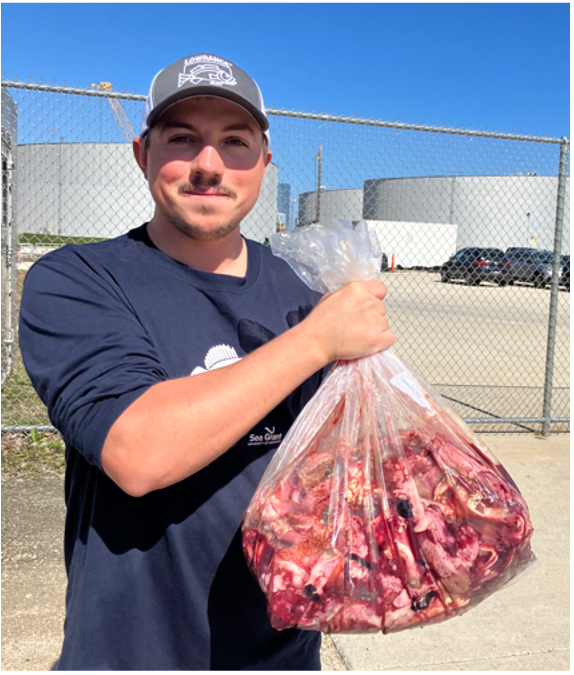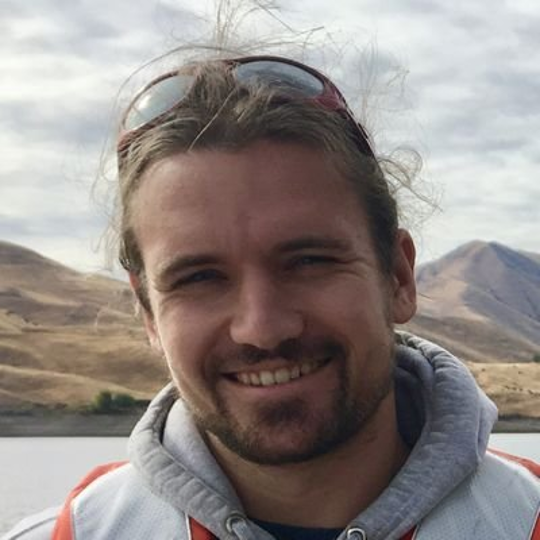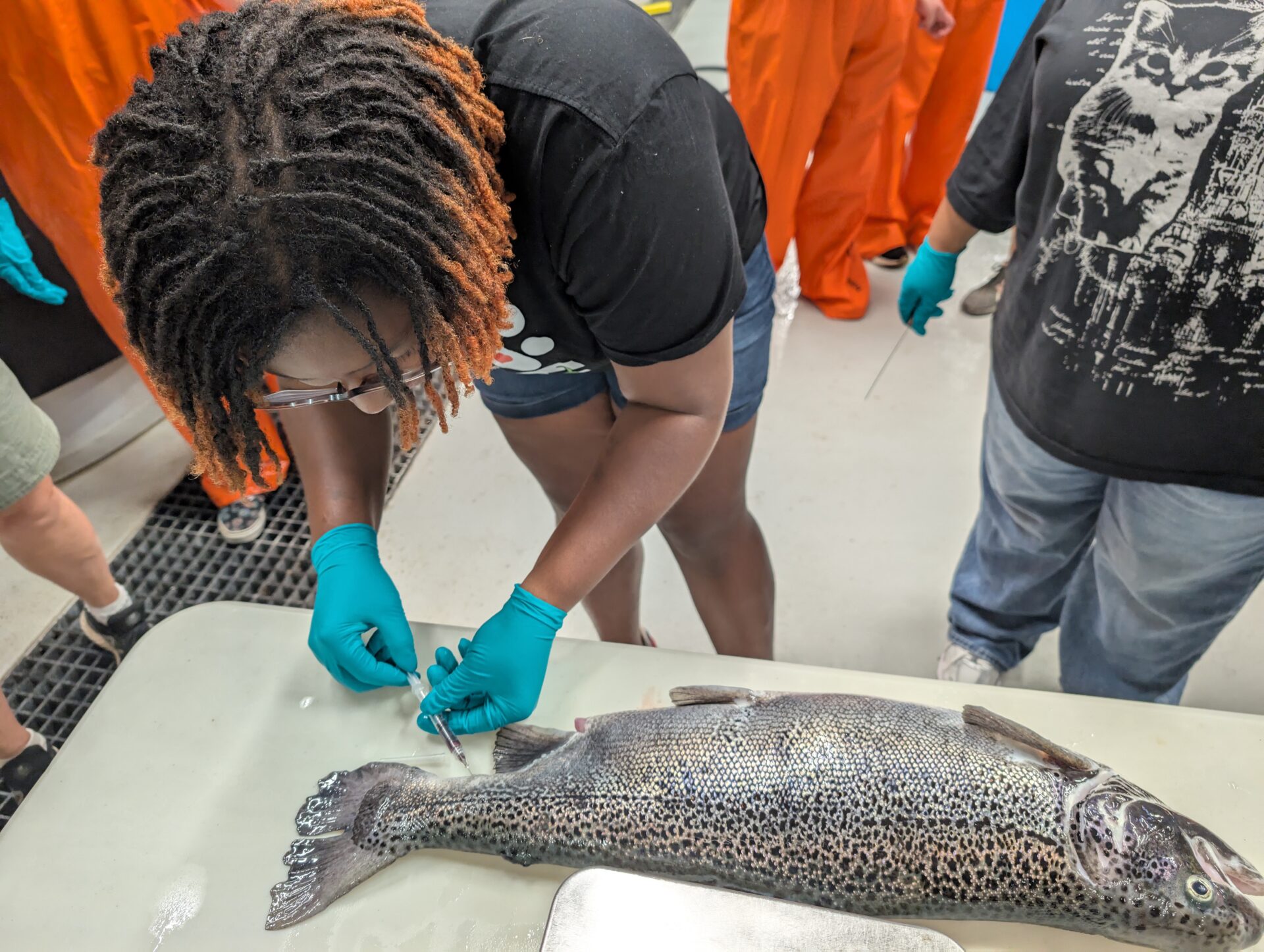Four photographs—a lighthouse atop a rocky Lake Superior promontory, a vessel steaming across Lake Michigan, a ghostly shipwreck and mustachioed gentlemen in old-timey clothes —are now in the hands of families across Wisconsin who are affected by memory loss.
The photos are part of the latest project of the acclaimed Milwaukee-based TimeSlips non-profit organization, which lives its philosophy: creativity can happen at all ages and stages of life. TimeSlips trains caregivers of every type to work with elders who have cognitive challenges to express themselves through creative storytelling using prompts—photographs, suggested projects and guided questions such as, What do you think is happening in this photo? What sounds do you hear? What do you want to name these people? What happens next?
Wisconsin Sea Grant contributed these photos and suggested prompts for the new Wisconsin Creative Care Guide. Other iconic Wisconsin activities and locations show up in the guide—cheese making and fishing, and Circus World Museum in Baraboo, West Bend’s Museum of Wisconsin Art and the Madison Children’s Museum.
Wisconsin Creative Care Guide Master Trainer and Project Manager Angela Fingard said it was important to include imagery from Sea Grant and shipwrecks in the 71-page guide. “Lake Michigan—all water, in fact—is such an important part of our state, for work and play. Water is a great way to talk about stories for that past narrative, a great way to get to creative stories.”
Sea Grant has had a 20-plus year partnership with the Wisconsin Historical Society, funding shipwreck exploration, which leads to documentation, information sharing and preservation of the state’s maritime past.
Tamara Thomsen, maritime archeologist, said, “This is an exciting project. I’m glad we could contribute our photographs to it. Wisconsin has more shipwrecks listed on the National Register of Historic Places because our state has made a commitment to this part of our past. For those with Alzheimer’s disease or other memory loss, they too may have had a past that involved water or boats, maybe even diving and shipwrecks. I’m glad we can help bring those memories and stories into the present through storytelling.”
The Wisconsin Creative Care Guide is being used in 50 skilled nursing homes across Wisconsin as part of TimeSlips Creative Communities of Care training. “We really worked to access all of Wisconsin with the Creative Care Guide,” Fingard said, noting that 35 of the facilities are outside of the southeastern part of the state. “We really are in every size city in Wisconsin.”
Although TimeSlips has built up a corps of certified facilitators in 12 countries and 42 states through its 20 years of existence, this latest project is purposely Wisconsin-centric. “These are focused only on Wisconsin. They are images provided that are telling a Wisconsin story. We wanted images that could be recognized by anyone, whether a caregiver or a community member. We wanted a common language for looking at the same image.”
Fingard outlined how that common language pays off in this effort, and with other TimeSlips projects. “We work hard to give those with memory issues a role in life—such as being a storyteller. So often, they can be looked at as only a patient, a resident or a person in need. These stories are a way for them to give back. It’s empowering.”
The project is also empowering activities directors in the selected nursing homes. She said each has two employees in activities participating. “We have trained 100 people but they can share with staff and volunteers so that hundreds if not thousands will be trained through the project.”
TimeSlips’ Founder and Director Anne Basting was named a recipient of the prestigious MacArthur Fellowship award in fall 2016. That, too, is a boon to the activities staff. “The work they do may not be viewed as important as it is. When they see a leader in their field get recognition it really helps buoy them so they can say, ‘See, this is really important,’ ” Fingard said.
There has been other value from the MacArthur recognition. “TimeSlips had wide breadth already. The award gave further credibility to what’s been done. When you’re talking with a caregiver it can focus so much on the physical or the pharmacological. The non-pharmacological—TimeSlips—can work very well as a supplement.” She said the MacArthur award, “Opens doors a little bit quicker. It drew caregivers attention to it (TimeSlips).”
The Creative Care Wisconsin Guide and the Creative Communities of Care training for these 50 skilled nursing homes in the state has received support from the Wisconsin Department of Health Services, Division of Quality Improvement in Long-Term Care and the National Endowment for the Arts.
Fingard said TimeSlips is always looking to make connections with wider communities. “Creating a story is one mechanism for engagement. Another is community celebration. We invite the greater community to be involved. Museums, libraries and other community organizations are great places to share these stories or to share photos to then create stories from,” Fingard said. She urged people to contact TimeSlips through info@timeslips.org to get involved.





